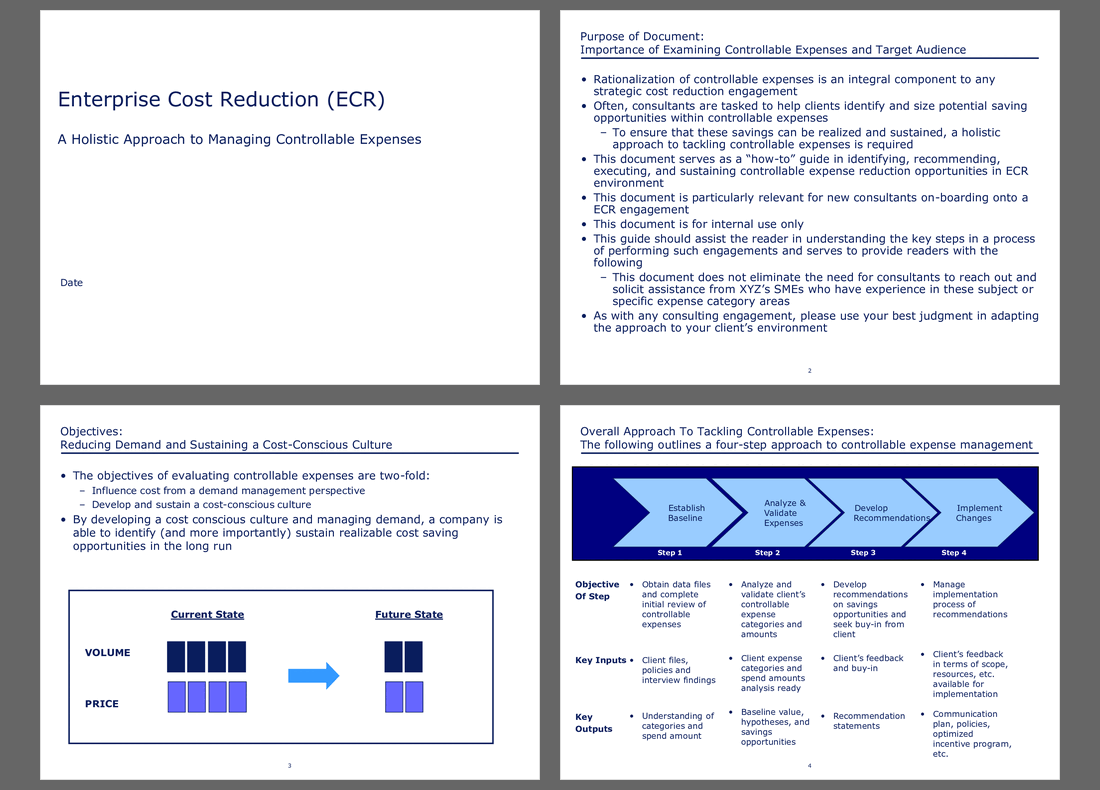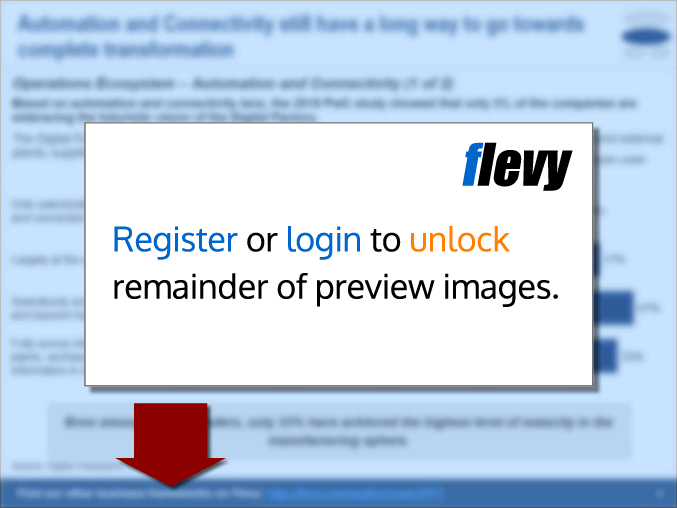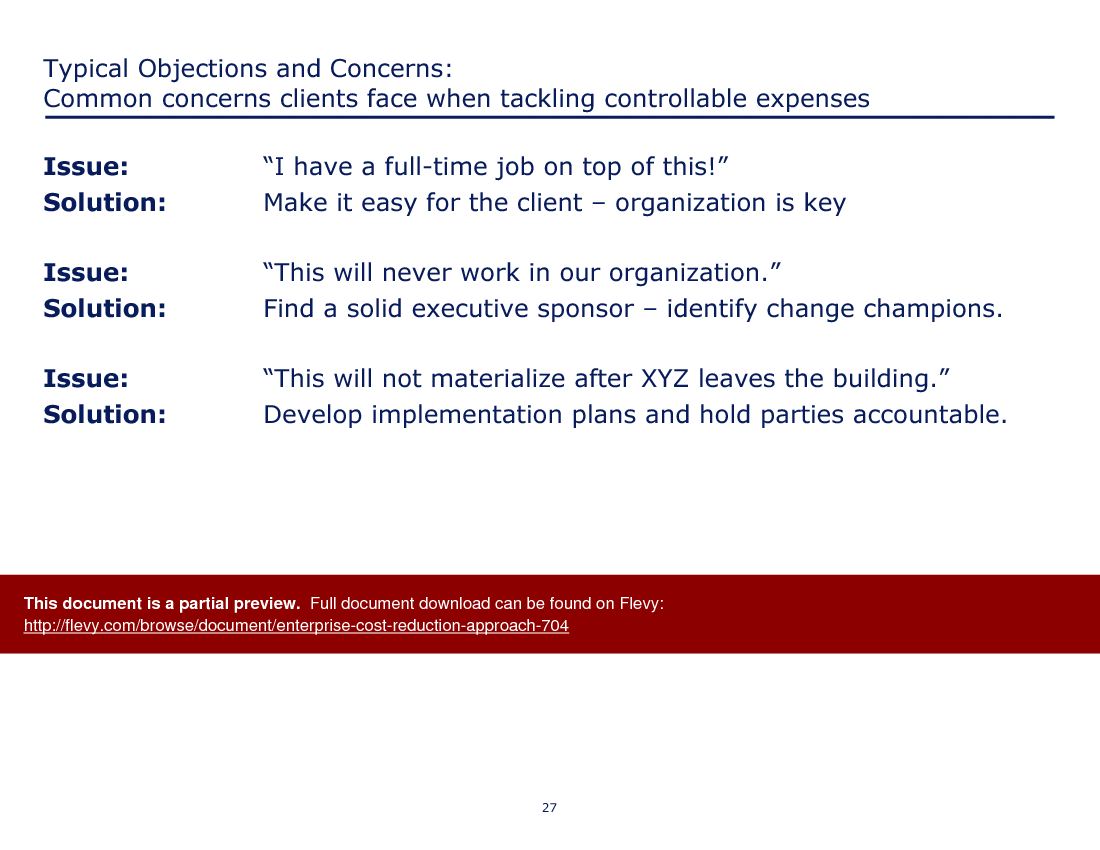Enterprise Cost Reduction Approach (PowerPoint PPT Slide Deck)
PowerPoint (PPT) 36 Slides
COST REDUCTION ASSESSMENT PPT DESCRIPTION
Rationalization of controllable expenses is an integral component to any strategic cost reduction engagement. Often, an organization must identify and size potential saving opportunities within controllable expenses. To ensure that these savings can be realized and sustained, a holistic approach to tackling controllable expenses is required.
This document serves as a "how-to" guide in identifying, recommending, executing, and sustaining controllable expense reduction opportunities in a Enterprise Cost Reduction (ECR) environment. This framework presents a holistic approach to managing controllable expenses.
This document goes beyond just identifying and recommending cost reduction opportunities. It provides a structured approach to establishing a baseline for current expenses, ensuring that all subsequent actions are grounded in accurate data. The baseline establishment phase is critical for setting realistic and achievable targets, making it easier to track progress and measure success.
The document also delves into strategic sourcing versus demand management, offering practical examples like cellular phone reimbursement. It highlights how strategic sourcing can help find vendors offering the best quality at the lowest price, while demand management focuses on reducing unnecessary expenses. This dual approach ensures that cost reduction efforts are both comprehensive and sustainable.
Policy review is another key component covered in this document. It outlines the importance of having clear, well-documented policies governing controllable expenses. The guide provides a checklist for evaluating existing policies, ensuring they are up-to-date, aligned with business objectives, and compliant with federal and state laws. This thorough review process helps identify gaps and areas for improvement, making policy recommendations more effective.
The document also includes tools for quantifying savings opportunities. It offers templates for categorizing and validating expense categories, developing hypotheses for cost reduction, and running financial impact analyses. These tools are designed to help you formulate actionable plans and validate them with subject matter experts, ensuring that your cost reduction initiatives are both data-driven and feasible.
Got a question about the product? Email us at support@flevy.com or ask the author directly by using the "Ask the Author a Question" form. If you cannot view the preview above this document description, go here to view the large preview instead.
Source: Best Practices in Cost Reduction Assessment PowerPoint Slides: Enterprise Cost Reduction Approach PowerPoint (PPT) Presentation Slide Deck, Documents & Files
COST REDUCTION ASSESSMENT PPT SLIDES












